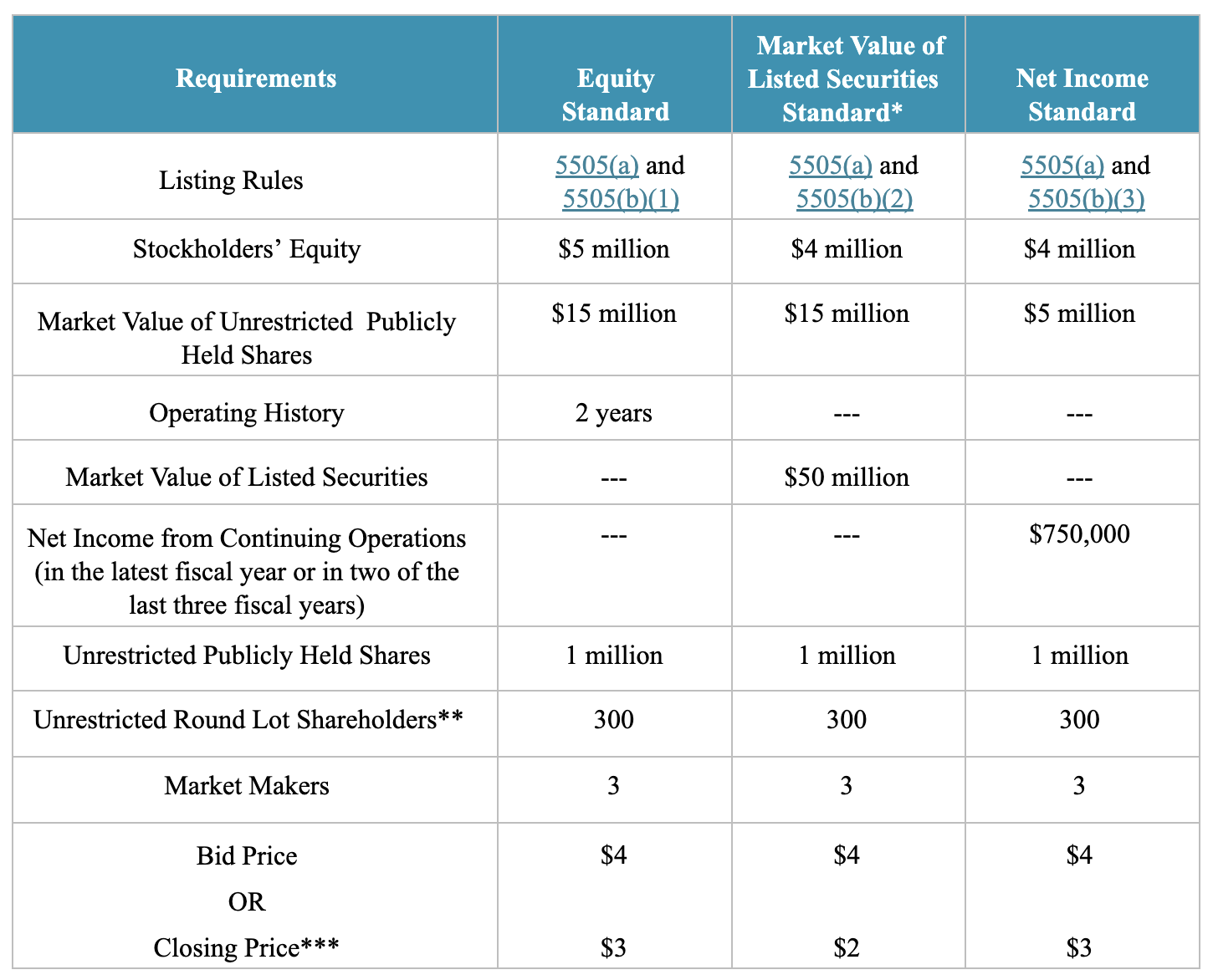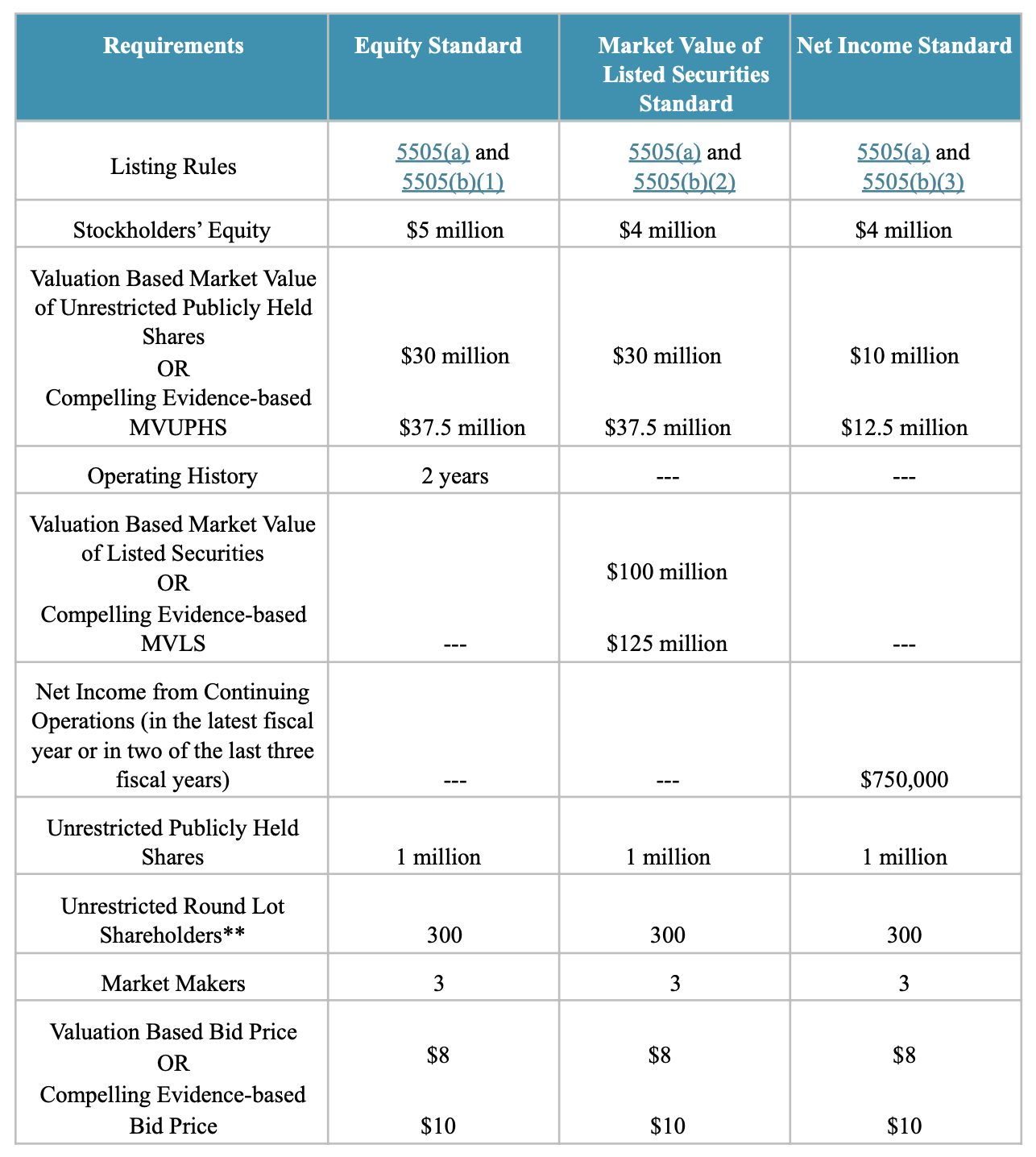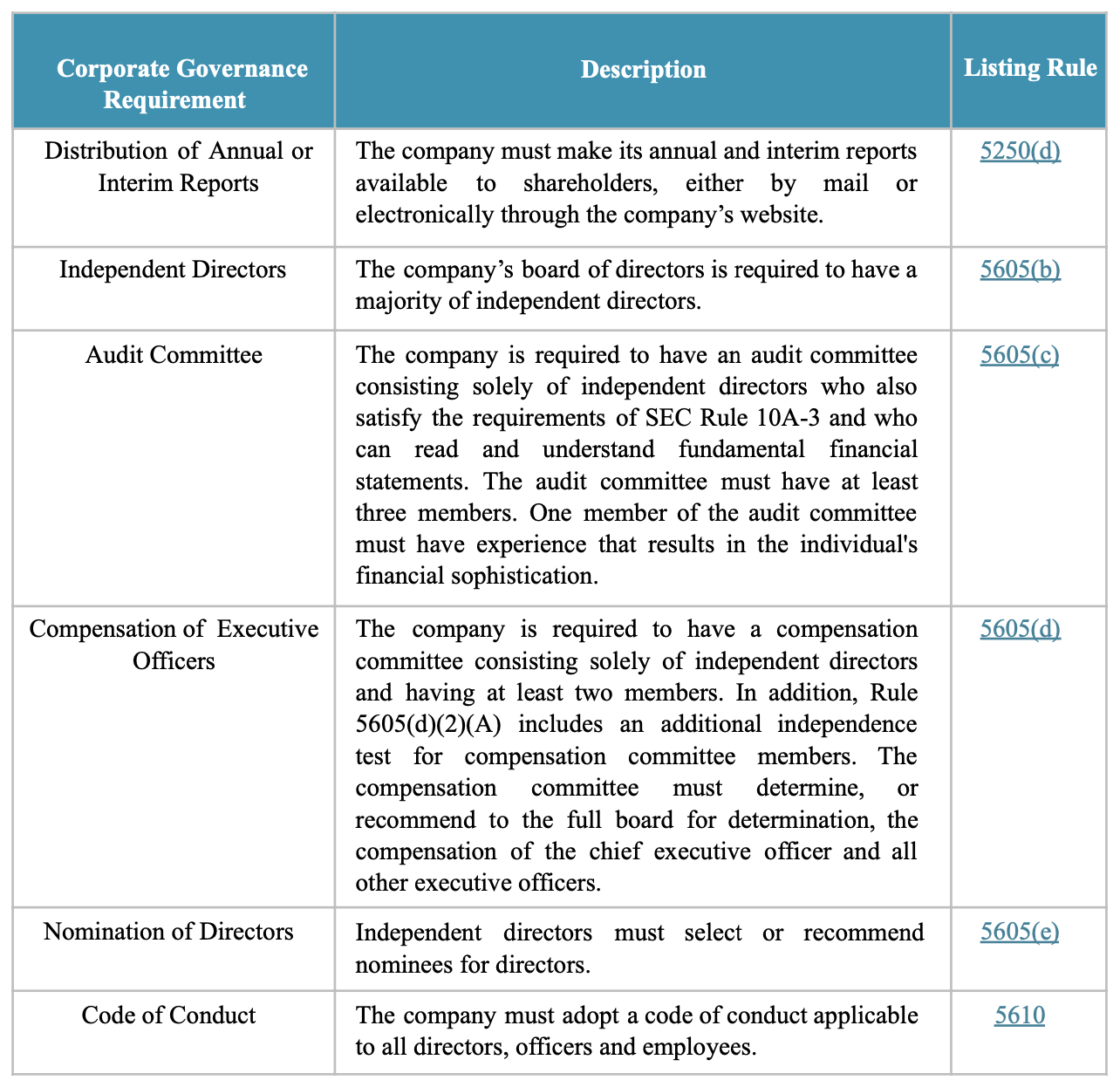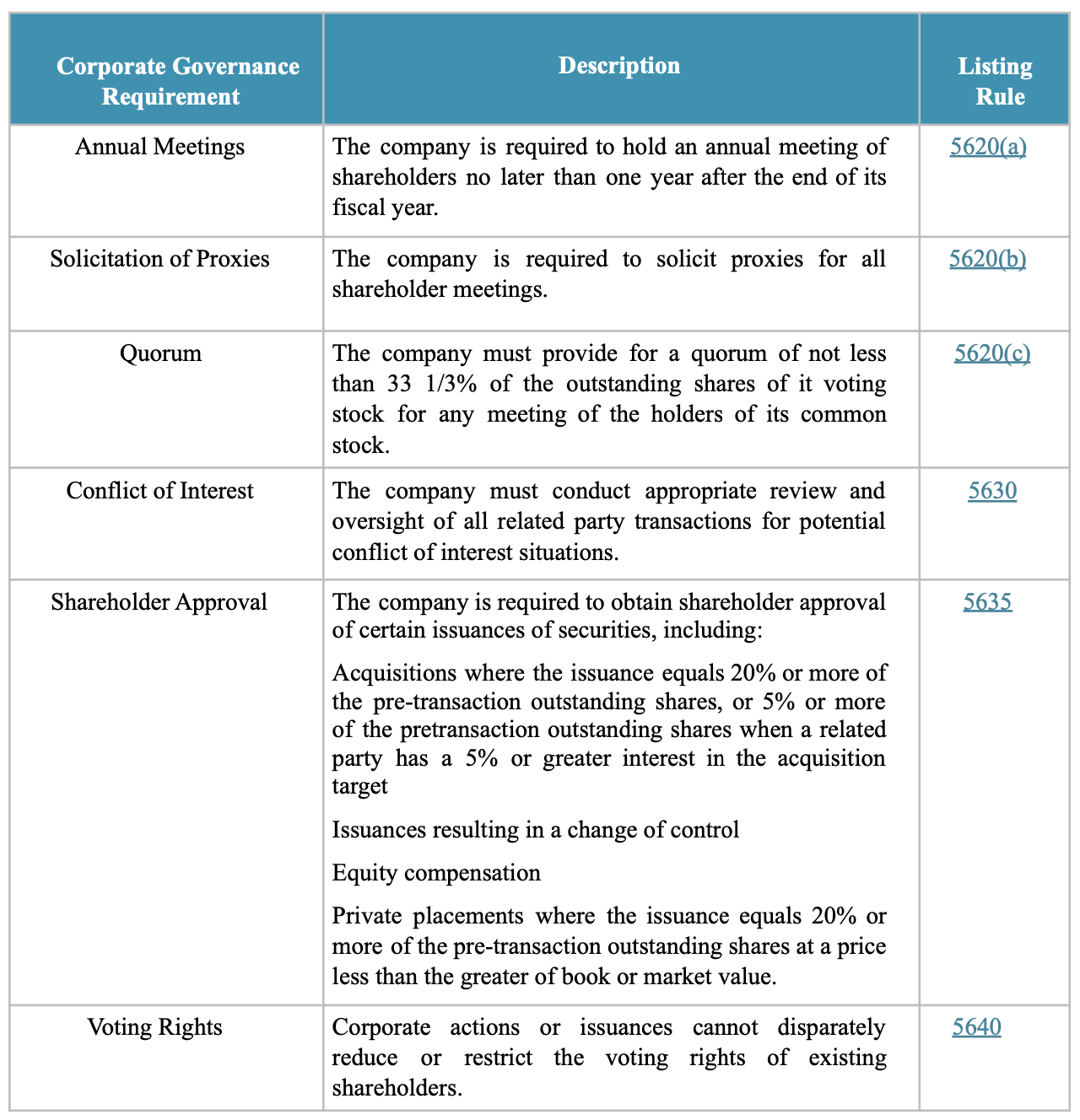IPO v Direct Listing Go Public Direct

IPO v Direct Listing Go Public Direct FAQ
Q: How is going public with a direct listing to the NASDAQ Capital Market different than the traditional IPO listing to NASDAQ Capital Market?
A: Both direct listings and Initial Public Offerings or IPOs result in a privately held company becoming publicly traded on a stock exchange.
Q. How is the process to go public with an IPO different than the listing process for going public with a direct listing to the NASDAQ Capital Market?
A: The process to go public distinguishes a direct listing different from an IPO. In a direct listing, a private company lists on an exchange without an underwriter, allowing the shares held by its private stockholders to publicly trade on the NASDAQ Capital Market.
Q. Is a company conducting a direct listing to NASDAQ Capital Market required to hire an investment bank or market maker?
A: Companies seeking to list on NASDAQ Capital Market with a direct listing must hire a financial advisor for their direct listing. Companies listing on NASDAQ Capital Market with an IPO engage a broker-dealer as an underwriter for the offering of shares to raise capital.
Q: Why would a company go public to NASDAQ Capital Market with a direct listing instead of an Initial Public Offering?
A: Companies should consider going public via a direct listing for four primary reasons:
-
- Companies may want to provide liquidity and an exit strategy to their investors even if they don’t need to raise capital, while IPOs typically involve lockup agreements for 180 days after a NASDAQ Capital Market listing is approved.
- For those companies with sufficient capital, a direct listing does not dilute existing shareholders.
- Some companies may believe that their shares will be sold for a higher price to investors after they are publicly traded and listed on NASDAQ Capital Market as opposed to when they were a privately held company.
- A DPO is not a priced offering like an IPO, and as such, there is undefined pricing and order size upon NASDAQ Capital Market listing.
Q: What is the NASDAQ Capital Market and what are its requirements?
A. The NASDAQ Capital Market offers the lowest standard for listing and is often selected by smaller companies seeking public company status on an exchange like NASDAQ instead of the OTC Markets. Its requirements for listing with an Initial Public Offering and Direct Listing are set forth below.
I. NASDAQ CAPITAL MARKET: INITIAL PUBLIC OFFERING REQUIREMENTS
Financial and Liquidity Requirements
Companies (other than those listed in connection with a Direct Listing) must meet all of the criteria under at least one of the three standards below.

* Currently traded companies qualifying solely under the Market Value Standard must meet the $50 million market value of listed securities and the applicable bid price requirement for 90 consecutive trading days before applying.
** Securities subject to resale restrictions for any reason are excluded from the calculation of publicly held shares, market value of publicly held shares and round lot shareholders. In addition, except for SPACs listing under IM-5101-2, at least half of the minimum required number of round lot holders must each hold unrestricted securities with a minimum value of $2,500.
*** To qualify under the closing price alternative, a company must have (i) average annual revenues of $6 million for three years, (ii) net tangible assets of $5 million or (iii) net tangible assets of $2 million and a 3-year operating history, in addition to satisfying the other financial and liquidity requirements listed above.
In addition to the above requirements, if the security is trading in the U.S. over-the-counter market as of the date of application, the security must have a minimum average daily trading volume of 2,000 shares (including trading volume of the underlying security on the primary market with respect to an ADR), over the 30 trading day period prior to listing, with trading occurring on more than half of those 30 days, unless such security is listed on the Exchange in connection with a firm commitment underwritten public offering of at least $4 million.
A company that principally administers its business in a Restrictive Market, and is conducting an initial public offering, must offer a minimum amount of securities in a firm commitment underwritten public offering in the U.S. to public holders that (i) will result in gross proceeds to the company of at least $25 million or (ii) will represent at least 25% of the company’s post-offering Market Value of Listed Securities, whichever is lower. A company that is conducting a business combination with an entity that principally administers its business in a Restrictive Market must have a minimum market value of unrestricted publicly held shares following the business combination equal to the lesser of (i) $25 million or (ii) 25% of the post-business combination entity’s market value of listed securities.
II. NASDAQ CAPITAL MARKET: DIRECT LISTING REQUIREMENTS
Financial and Liquidity Requirements
Companies listing on NASDAQ Capital Market with a Direct Listing must meet all of the criteria under at least one of the three standards below. Listing Rule IM-5505-1 provides that in determining whether a Company satisfies the initial listing requirements based on the price of a security, Nasdaq will rely on a valuation* provided by an independent third-party that has significant experience and demonstrable competence or certain compelling evidence.

* If the company’s security has had sustained recent trading in a private placement market, Nasdaq will attribute price, market value of listed securities, and market value of unrestricted publicly held shares to the company equal to the lesser of (i) the value calculable based on the independent third-party valuation and (ii) the value calculable based on the most recent trading price in a private placement market.
**Securities subject to resale restrictions for any reason are excluded from the calculation of publicly held shares, market value of publicly held shares and round lot shareholders. In addition, except for SPACs listing under IM-5101-2, at least half of the minimum required number of round lot holders must each hold unrestricted securities with a minimum value of $2,500. A company that principally administers its business in a Restrictive Market will not be permitted to list on the Nasdaq Capital Market in connection with a Direct Listing.
Corporate Governance Requirements
Companies listed on The Nasdaq Stock Market are required to meet high standards of corporate governance, as set forth in the Listing Rule 5600 Series. Certain exemptions and phase-ins from these requirements apply to limited partnerships, foreign private issuers, initial public offerings and controlled companies. The following chart provides an overview of Nasdaq’s corporate governance requirements.


For further information about this article, please contact an SEC attorney at (561) 416-8956 or by email at [email protected]. This securities law and understanding unregistered securities offerings article is provided as a general informational service to clients and friends of Hamilton & Associates Law Group and should not be construed as, and does not constitute, legal advice on any specific matter, nor does this message create an attorney-client relationship. For more information concerning the rules and regulations affecting securities offerings, Regulation D of the Securities Act, going public, SEC registration on Form S-1 and Form F-1 for domestic and foreign issuers, IPOs and DPOs for NYSE, NASDAQ and OTC Markets and SEC disclosure requirements, please contact Hamilton and Associates at (561) 416-8956 or by email at [email protected]. Please note that the prior results discussed herein do not guarantee similar outcomes.






